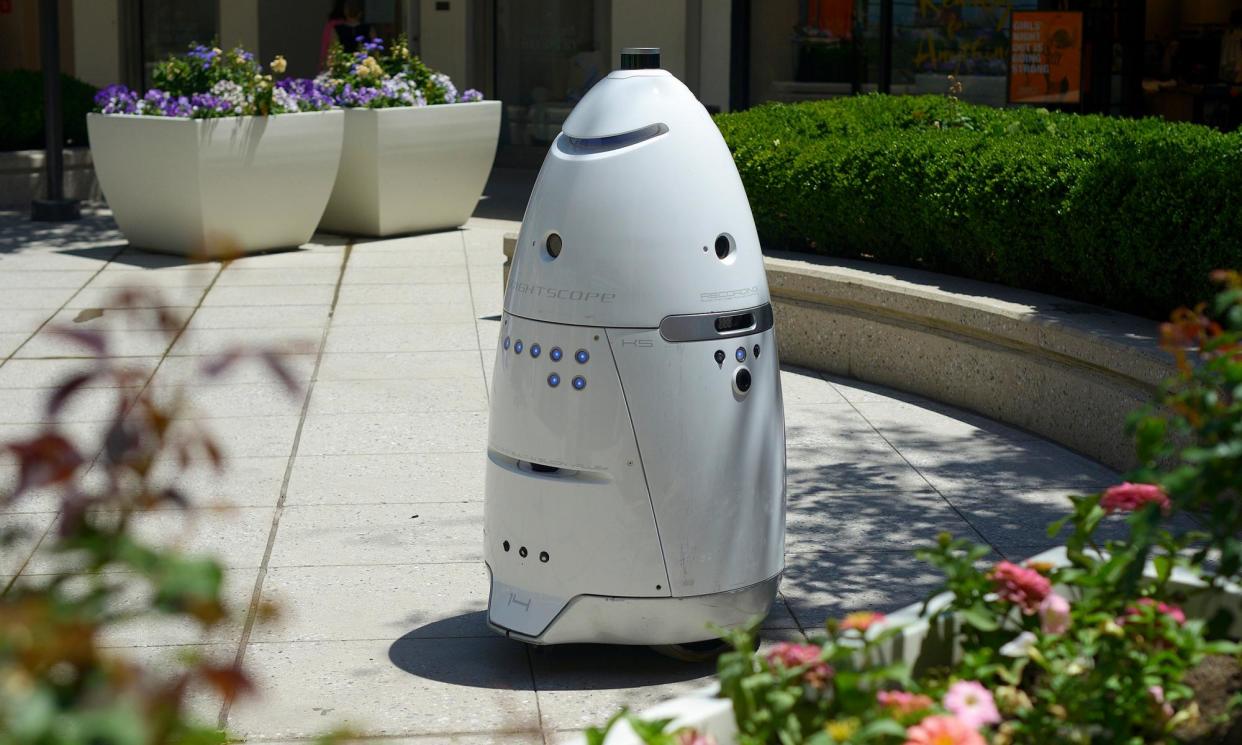Texas’s San Antonio airport will get a 420lb autonomous security robot

An autonomous robot is due to become the latest addition to San Antonio International Airport’s security apparatus.
Following a 7 to 3 vote on Thursday by the San Antonio city council, city officials approved a year-long contract with Knightscope, a California-based developer of autonomous security robots, to rent its K5 robot for $21,000.
Related: Fears of employee displacement as Amazon brings robots into warehouses
The robot, which weighs 420lbs, stands at 5ft 4in and travels at 3 miles per hour, is expected to make its appearance at the airport in the next two months, according to local reports.
According to Knightscope, the K5 is intended for outdoor use and features autonomous recharging without requiring human intervention. Features listed on Knightscope’s website include 360-degree and eye-level video streaming, people detection during certain restricted hours, thermal anomaly detection, as well as license plate recognition.
The city’s director of airports, Jesus Saenz, said that the K5 will be used to respond to door alarms at the airport and will be placed near doors with alarms that are frequently set off.
“Daily, we have door alarms that are opened inappropriately, inaccurately or by accident, and it requires a response, based on the federal regulations that we have to adhere to, to maintain an overall security posture of the airport,” said Saenz, the San Antonio Report reports.
Upon responding to an alarm, the K5 will take an image of the individual and relay the information to the airport’s command center personnel so officials can determine whether the individual is allowed access, San Antonio Express-News reports.
“This is not going to be utilized for surveillance – in no purposes whatsoever. This is not to surveillance individuals. This is a response to door alarms that occur at the airport,” he added.
Nevertheless, not everyone was on board with the robot. Jalen McKee-Rodriguez, a council member who represents San Antonio’s second district and who voted against the contract, told Saenz: “It’s not your intention to create a space where surveillance is happening … But if the robot has the ability to collect data and information and transmit that, that possibility remains. That door is open,” KSAT reports.
Meanwhile, Teri Castillo, a council member who represents the city’s fifth district and who also voted against the deal, asked Saenz whether the robot would replace any airport employees. In response, Saenz said that it would not and that the K5 will “supplement our overall security posture”, KSAT adds.
The K5 was previously used by New York City police last year to patrol Times Square’s subway station. At the time of its debut, New York City mayor Eric Adams hailed the robot, saying: “Eventually, this is going to be part of the fabric of our subway system.”
However, the pilot program came to an end earlier this month, with a spokesperson for Adams telling the New York Times: “The Adams administration is constantly exploring innovative technologies that can advance the work we’ve done to bring down crime and keep New Yorkers safe, while maximizing the use of taxpayer dollars.”
“We are reviewing options for the K5’s next deployment as part of the pilot,” the spokesperson added.

 Yahoo News
Yahoo News 
